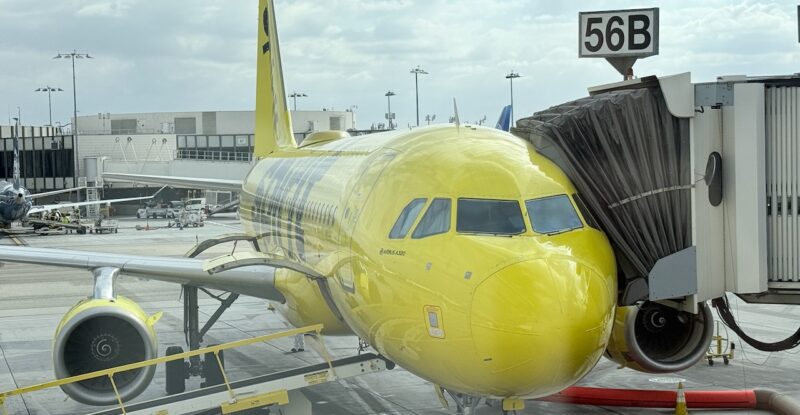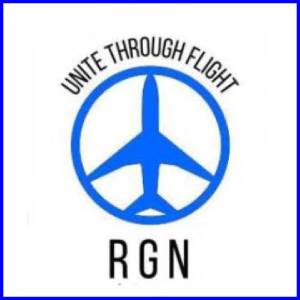 I booked Spirit’s newly branded First Class — the seat formerly known as the Big Front Seat — out of morbid curiosity. To hedge my bets, I backed it up with a refundable ticket on another airline in case the single daily flight was pulled, the schedule changed, there was an IROP, or the carrier simply stopped existing.
I booked Spirit’s newly branded First Class — the seat formerly known as the Big Front Seat — out of morbid curiosity. To hedge my bets, I backed it up with a refundable ticket on another airline in case the single daily flight was pulled, the schedule changed, there was an IROP, or the carrier simply stopped existing.
A few days before departure, once the bankruptcy court approved debtor-in-possession financing, I canceled the backup flight and decided to stick with Spirit.
On Monday morning, the aircraft was packed. Clearly, nobody was letting Chapter 11 (or “Chapter 22,” since Spirit has landed in the bankruptcy court for the second time in a year) deter them. For many, Spirit is still perceived as the cheapest way to get from A to B, in spite of the hate the brand engenders — which is unfair given the airline’s much improved customer service and reliability.
For me, it was an experiment in what first class really means on an LCC.
Spirit’s product segmentation is now a long way from its bare-bones roots. Post-COVID, the airline began moving upmarket, introducing fare bundles once antithetical to its ‘a la carte’ ancillary DNA. It now offers:
- Value (Formerly “Go”): the classic unbundled Spirit fare: a seat, one personal item, and the opportunity to pay for everything else.
- Premium (Formerly “Go Comfy”): a standard seat with a blocked middle or extra legroom, one carry-on, 25 % off inflight catering, and Priority 2 boarding.
- First (Formerly “Go Big”: the full bundle anchored by the Big Front Seat: priority boarding, one checked bag and one carry-on, complimentary snacks and drinks (including alcohol), shortcut security, and high-speed Wi-Fi.
Over time, the branding evolved from Big Front Seat to a Go Big bundle and now First Class, with the marketing push to match, though the former is still embossed on the headrests.
It’s still very much low-cost, but when your branding says First Class, that comes with expectations.
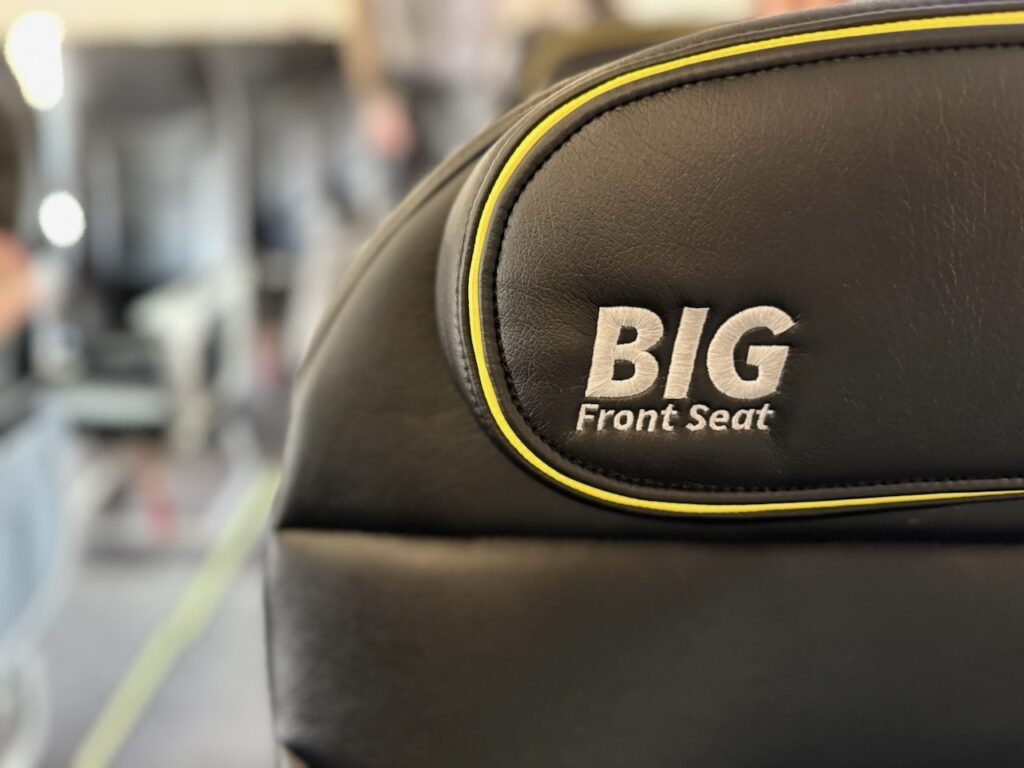
Booking, price, and comparison
My LAX–Fort Lauderdale flight — one of Spirit’s longest at 5 hours 5 minutes — cost $399 one-way. That’s $130 more than the $269 Premium economy fare and $190 over the $209 Value fare.
Here’s how that stacked up against the competition:
- JetBlue: Blue Basic $148; Even More Space $288; Mint $1,901 which features fully lie-flat seats and premium dining.
- American Airlines (LAX–MIA A321): Basic Economy $209; Main Select $359 (extra legroom, bags, priority); Domestic First $1,234 — recliners, not lie-flats, priced from Miami.
- Spirit First: $399, with a wide seat, both bags, snacks, drinks, and Wi-Fi included.
Spirit First Class costs roughly a third of American’s domestic recliners and one-fifth of Mint. JetBlue and the network carriers have narrowed the pricing gap so much that Basic Economy has eroded the traditional LCC advantage. The irony is that Spirit’s greatest relative value now sits at the top of its fare structure, not the bottom.
Check-in and boarding
Check-in opened 24 hours before departure via email and app alert. The process was painless. The boarding pass loaded instantly, and upsells were mercifully restrained because I had purchased all the perks.
Spirit First entitled me to express TSA as well, though I opted to use my CLEAR membership. Traveling carry-on only, I bypassed the counter and proceeded directly to my preferred Spirit First Class Lounge: Hudson News in LAX Terminal 5.
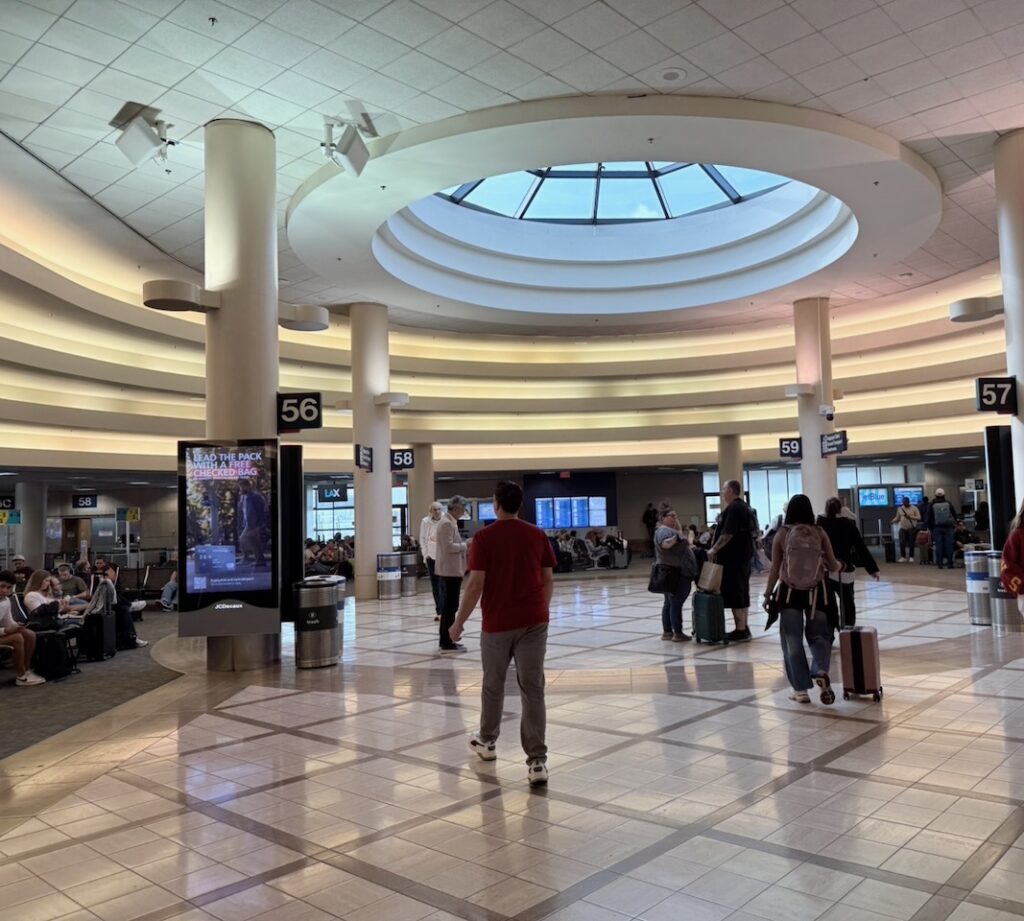 About 30 minutes before boarding, the app pinged a gate change notification that actually worked. Priority 1 boarding (included with the fare) slid me ahead of the crowd.
About 30 minutes before boarding, the app pinged a gate change notification that actually worked. Priority 1 boarding (included with the fare) slid me ahead of the crowd.
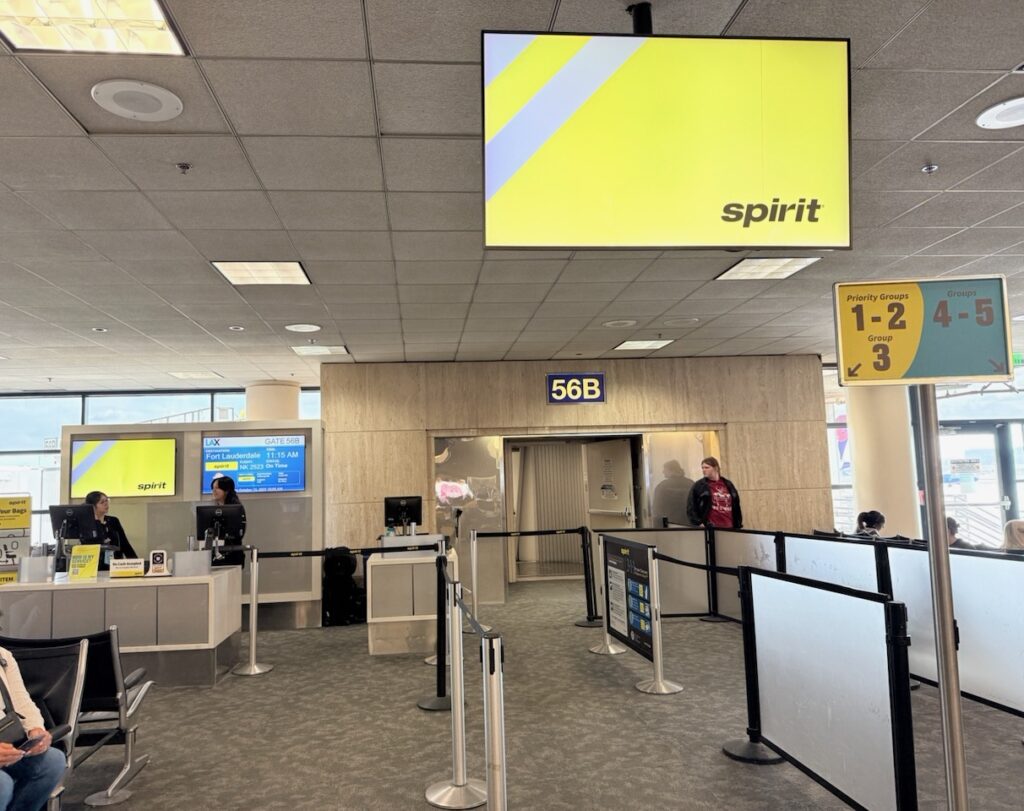
Departure
Our 10-year-old A320ceo (delivered April 30 2015, powered by V2527-A5 engines) looked remarkably tidy for its age with a clean cabin, intact fittings, and no scuffed panels. Spirit’s fleet may have recently shrunk from 214 to fewer than 100 aircraft, but at least this one hadn’t gone feral.
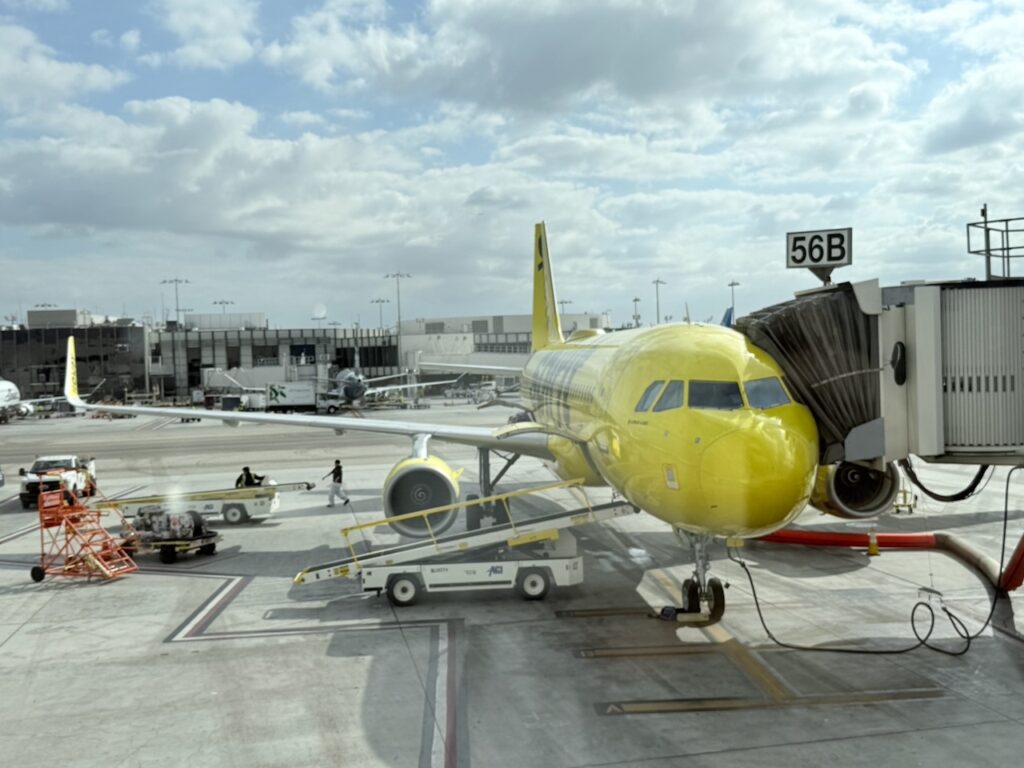
During boarding, the PA promoted the new First and Premium products twice over soft boarding music. The flight was full, and everyone was casually dressed.
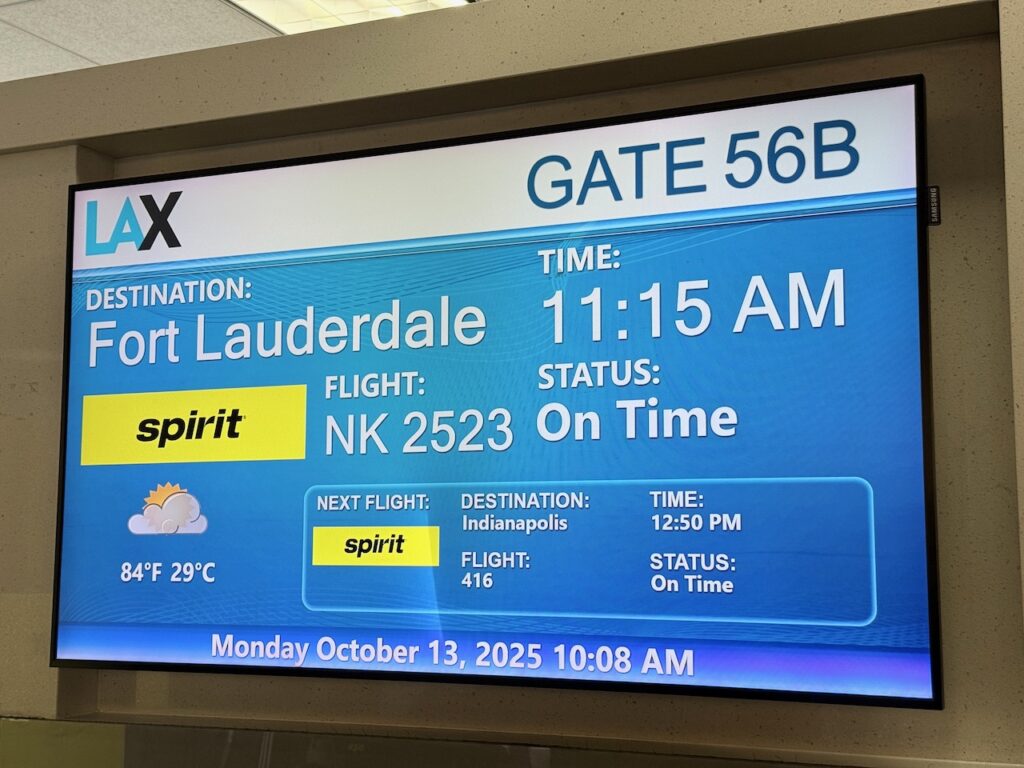
Doors closed on time, but pushback stalled for about three minutes while operations notified the crew that one flight attendant was being reassigned to another flight. Confusion ensued; the captain sensibly decided not to return to the gate and we pressed on.
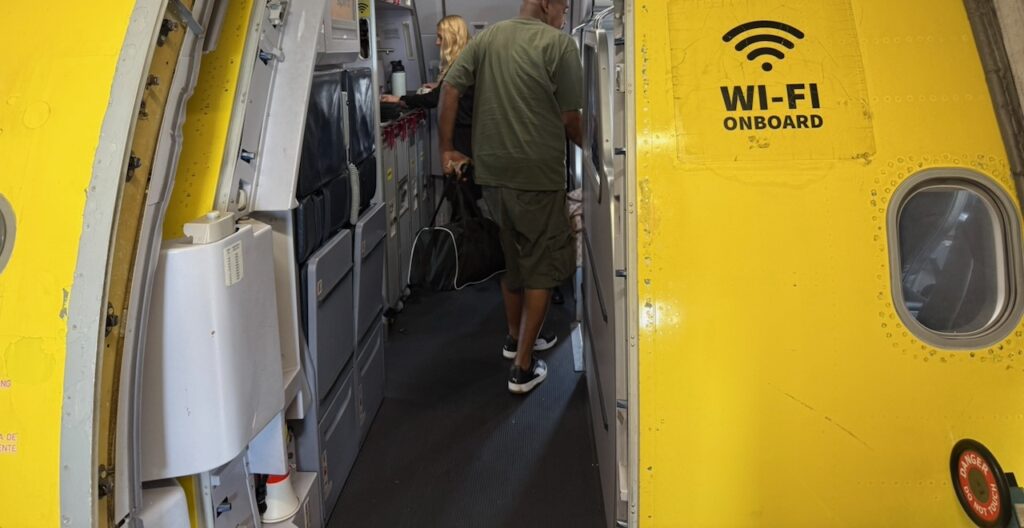 When the throttles advanced, the V2500s roared with a full-bodied, old-school growl. The engines seemed shockingly loud after years of flying whisper-quiet LEAPs and GTFs (when they’re not AOG). I almost felt nostalgic.
When the throttles advanced, the V2500s roared with a full-bodied, old-school growl. The engines seemed shockingly loud after years of flying whisper-quiet LEAPs and GTFs (when they’re not AOG). I almost felt nostalgic.
Hard Product
Spirit’s First Class cabin has two rows of Big Front Seats (eight total) in a 2-2 layout, followed by Premium and standard economy in 3-3. My aircraft carried the HAECO-built generation introduced in 2020, offering 36 inches of pitch and 20 inches of width. (Spirit later adopted the HAECO Vector Premium model for new aircraft.)
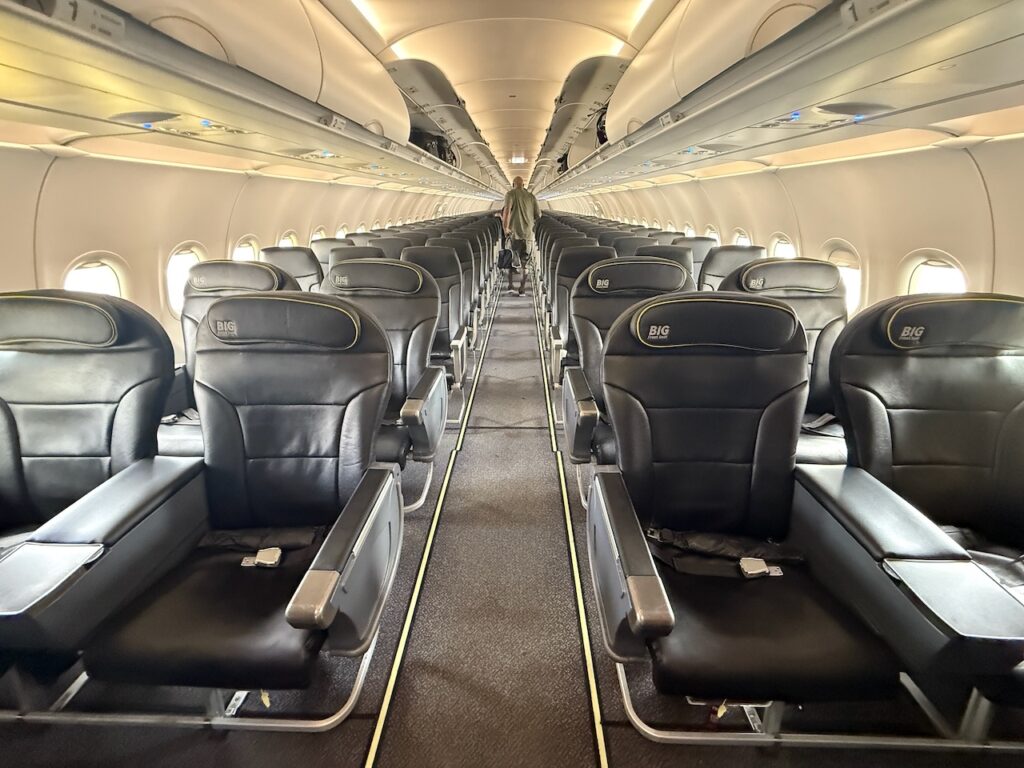
They’re firm and comfortable, upholstered in matte black with yellow stitching. These seats feel less like domestic premium economy and more like Collins MiQ recliners without the recline — or the sliding cocktail table.
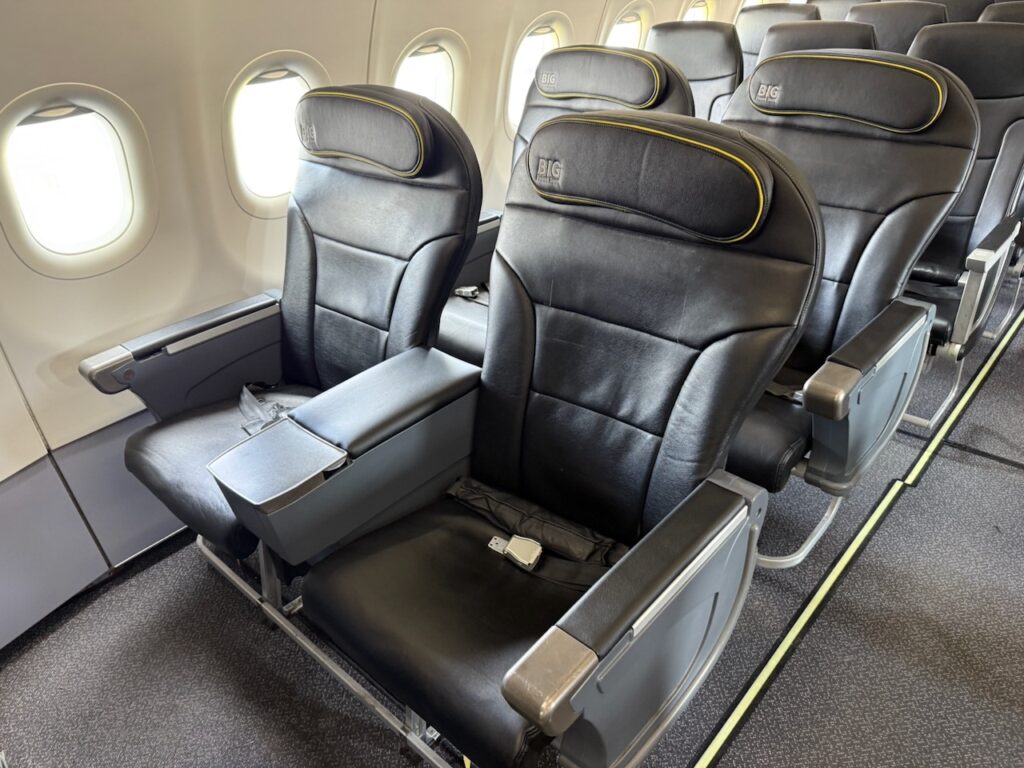
The armrest houses a proper tray table that’s large enough for a laptop, and a small ledge between seats works as a drink perch. Device holders would be handy.
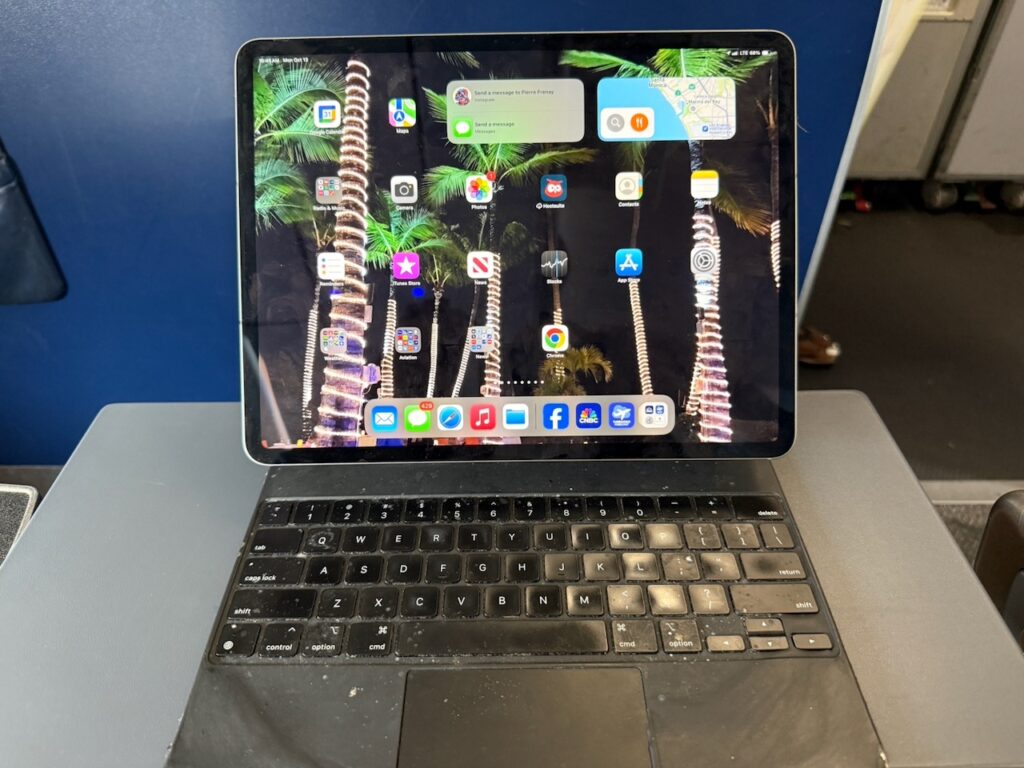
I booked 2D but a couple traveling together asked me if we could trade, so I complied and switched to the Bulkhead 1D.
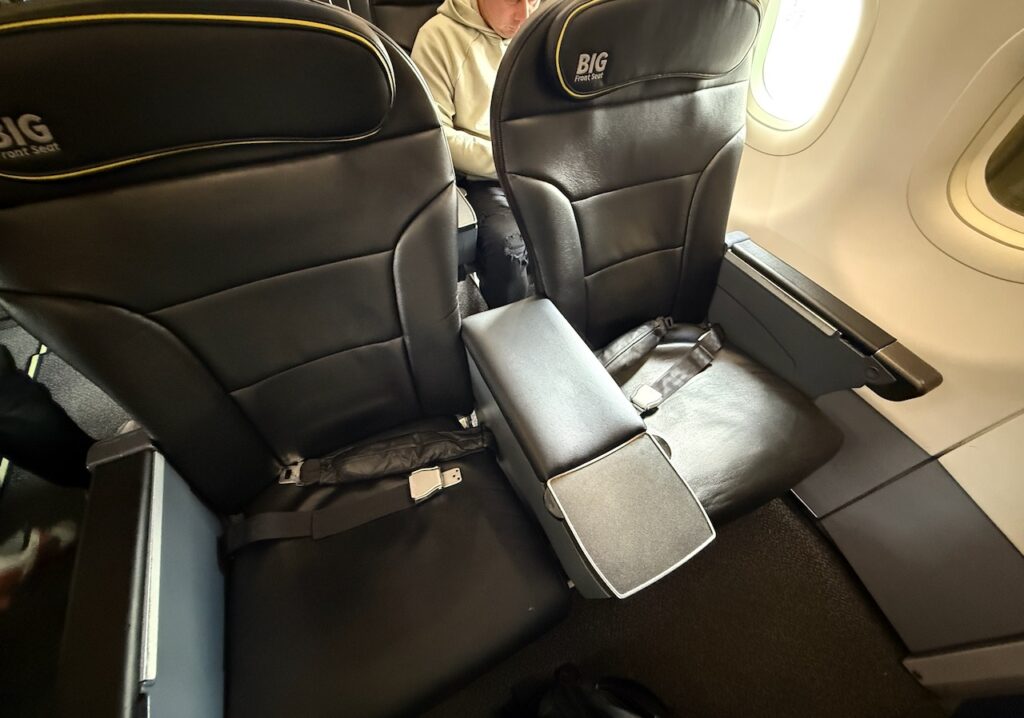
Fortunately, there was still room in the overhead bin for my backpack. Spirit doesn’t reserve the First overheads for its First guests. There’s no divider between classes, which keeps the cabin visually open but egalitarian
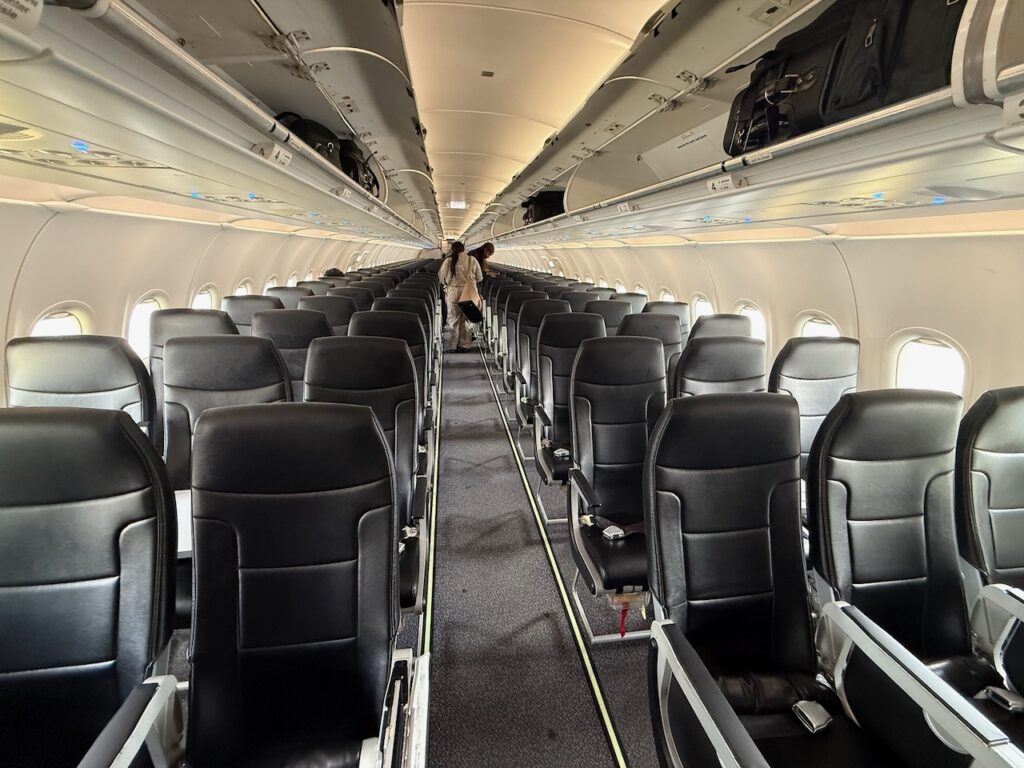
Under the skin, these are solid chairs with supportive foam and sturdy frames. Compared to the 28″ pitched torture chambers behind, it felt almost luxurious.
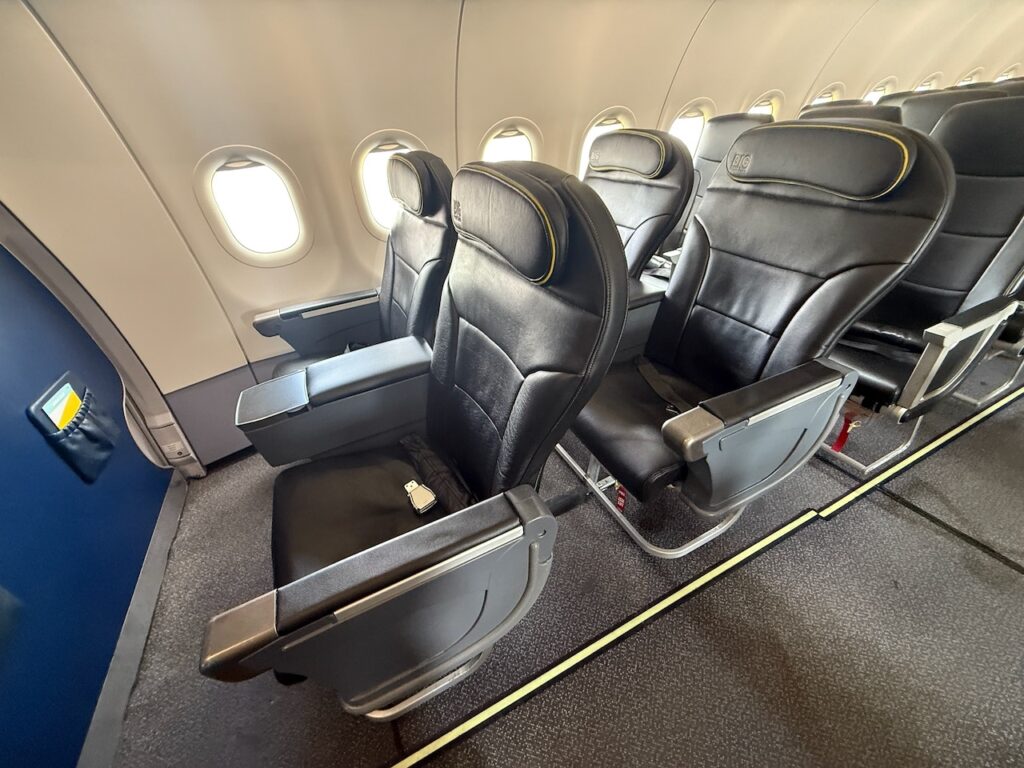
Connectivity and Power
Spirit’s Thales-powered high-speed Wi-Fi promises gate-to-gate coverage. In reality, it delivered cruise-to-cruise on this flight. Oddly, the connection didn’t activate until around 20,000 feet. Two plans appeared: $16.99 for browsing and $19.99 for streaming. Not exactly a bargain.
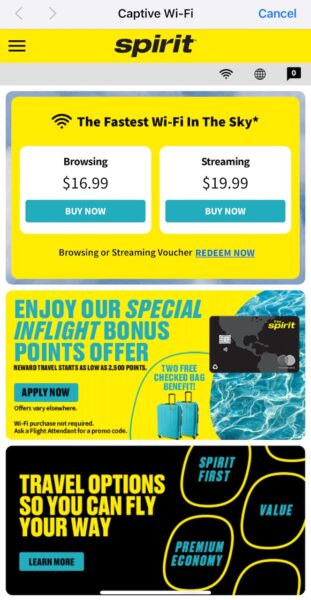
Luckily, First Class fares include a complimentary pass for only one device, which I redeemed through the browser portal (not an app). Early attempts failed, then finally connected. Mid-flight, the portal briefly redirected me back to Spirit.com, demanding I repurchase, but eventually stabilized.
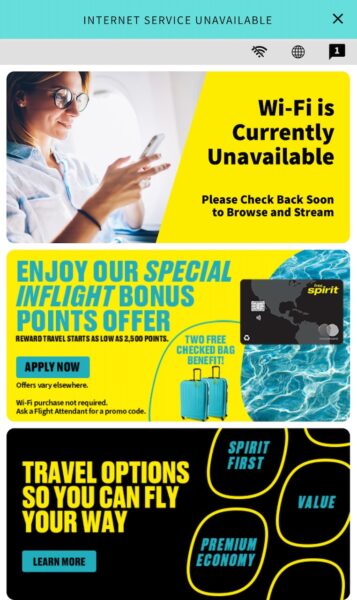 A speed test showed 30 Mbps down and 1 Mbps up which is adequate for video streaming but with lag and high latency.
A speed test showed 30 Mbps down and 1 Mbps up which is adequate for video streaming but with lag and high latency.
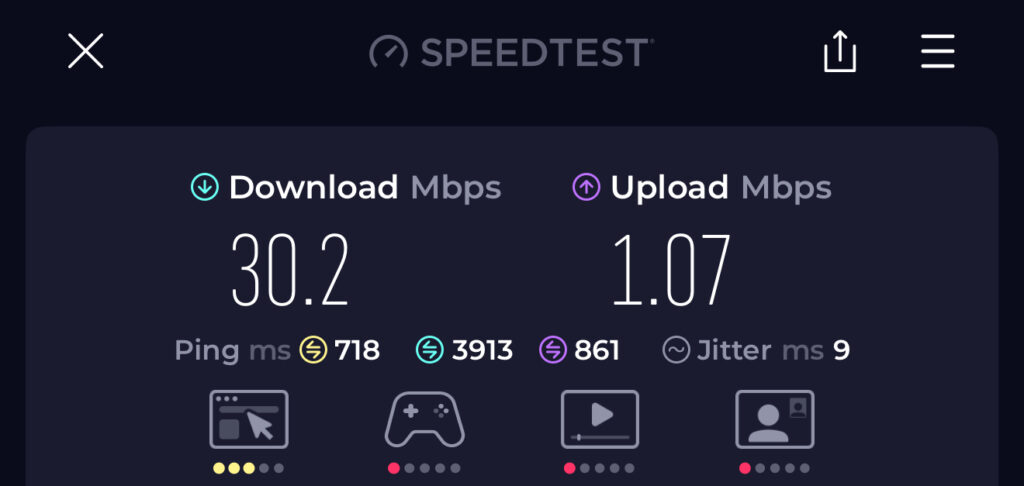
There’s no free content at all — no movies, music, or TV. What the portal does host is Spirit’s full buy-on-board menu, route map, and links to its Free Spirit loyalty program and credit-card offers.
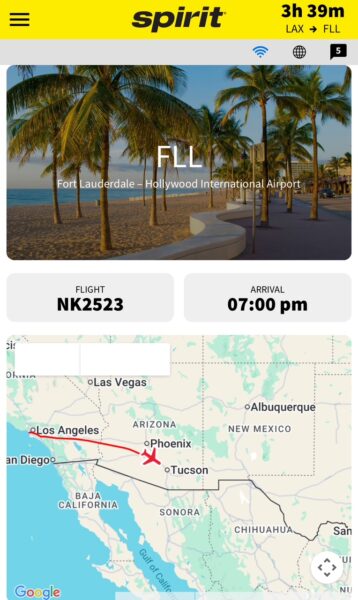
And because this is an LCC: no power outlets or USB ports. Bring a battery.
Soft Product
The inflight service began on the ground with my pre-departure beverage (actually a bottle of water from the Hudson News. This is Spirit!)
The real inflight service began after reaching cruise altitude. Complimentary snacks — pita chips or popcorn — and a beverage were offered, with all other items complimentary for First Class passengers.
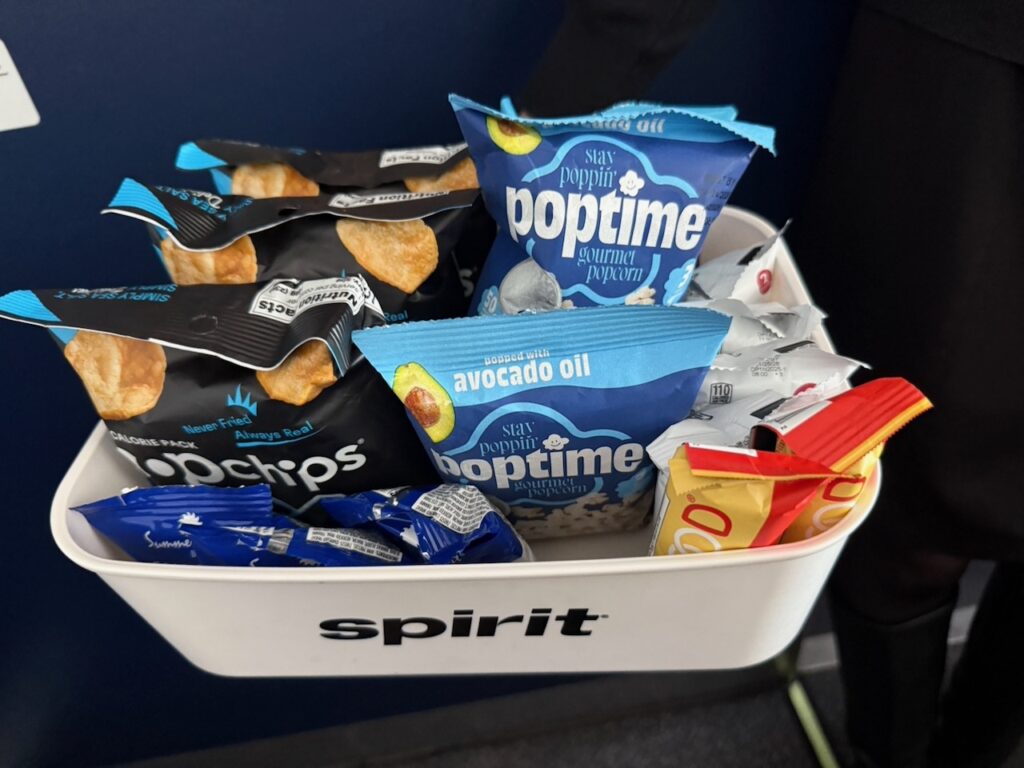 I browsed the app for Spirit’s eclectic menu: instant oatmeal, Otis Spunkmeyer muffins, ramen cups, M&Ms, Cheez-Its, Pringles, Dot’s Pretzels, sandwich-crème cookies, and three boxed snack bundles.
I browsed the app for Spirit’s eclectic menu: instant oatmeal, Otis Spunkmeyer muffins, ramen cups, M&Ms, Cheez-Its, Pringles, Dot’s Pretzels, sandwich-crème cookies, and three boxed snack bundles.
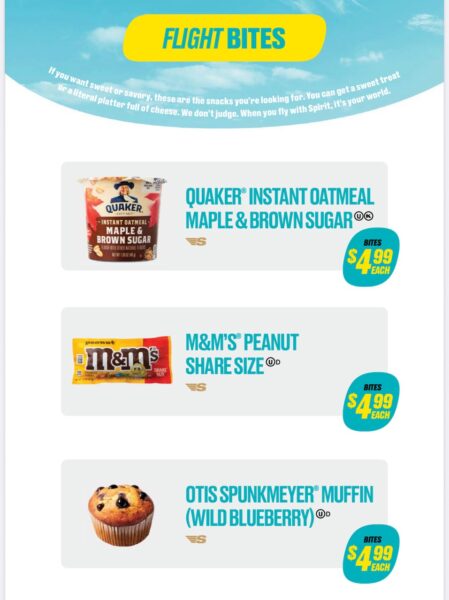 Prices are reasonable by airline standards. There are no ovens, so nothing hot is offered beyond water-based ramen or oatmeal. Everything in First Class was served on-demand by hand, rather than by cart.
Prices are reasonable by airline standards. There are no ovens, so nothing hot is offered beyond water-based ramen or oatmeal. Everything in First Class was served on-demand by hand, rather than by cart.
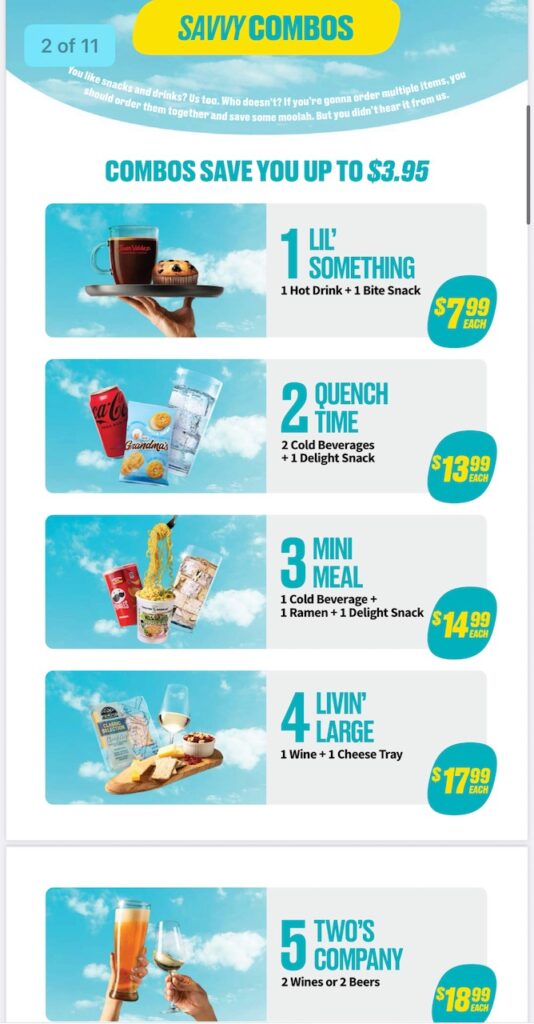
I went with a BuzzBox Margarita (not to be confused with the infamous BuzzBallz) plus pita chips and pretzels for a true carb overload. The margarita hit harder than expected. Good thing I’d hit the gym before departure. To avoid a buzz-cum-hangover, I selected a Sam Adams Light Lager or two from the adequate drinks menu.
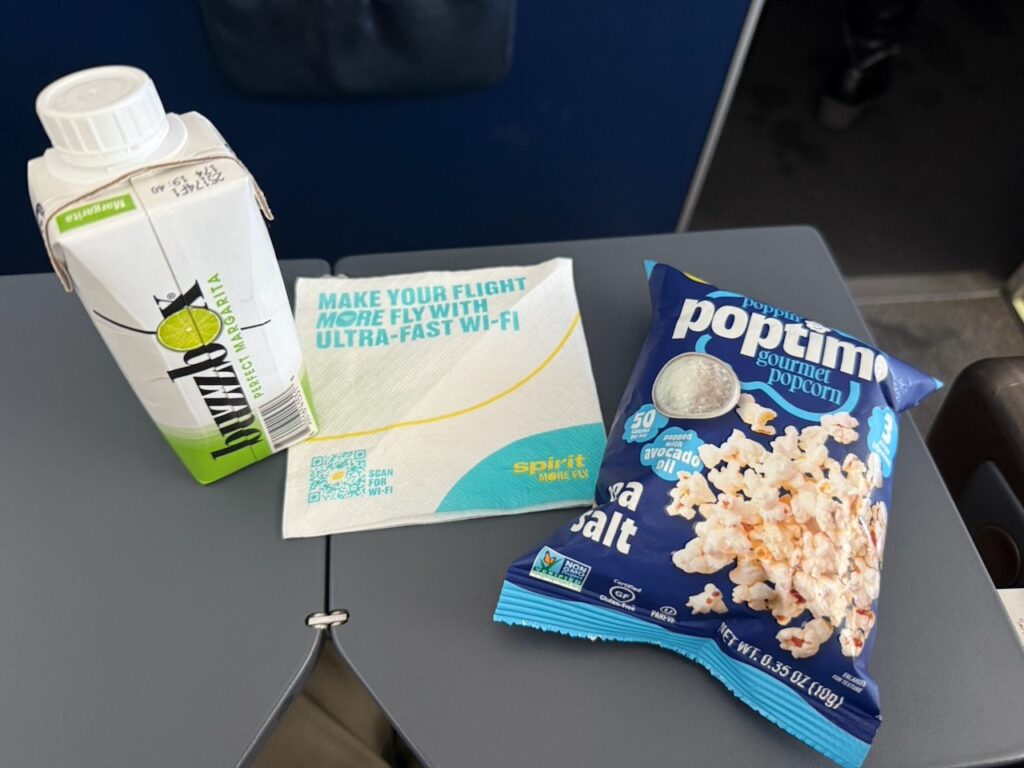 As the flight wore on, I found myself wishing for something more substantial — a sandwich, wrap, or even a salad.
As the flight wore on, I found myself wishing for something more substantial — a sandwich, wrap, or even a salad.
Cabin Crew
Four flight attendants worked the cabin, none dedicated to First, yet service didn’t suffer. They were casual but attentive, and efficient without being aloof. They checked in multiple times, refilled drinks, and maintained good humor despite the confusion at departure. They rolled the cart twice during the five-hour flight for our brethren in the back.
When I asked to photograph the snack setup, one FA politely declined, citing media policy. With the airline understandably press averse, I didn’t even ask to photograph the crew. No matter. What struck me was their cheerful professionalism amid uncertainty. I sat close enough to eavesdrop on the conversation and there was no company bashing. Even in Chapter 11, they seemed determined to deliver.
About 90 minutes before landing, a survey email from Spirit hit my inbox. That’s one way to ensure timely feedback.
Arrival and verdict
We touched down in Fort Lauderdale on time. The flight was devoid of drama. There were no episodes of “Spirit Passengers Behaving Badly” going viral on TikTok.
Chapter 11 is rarely positive for customer experience, but you wouldn’t know it from this flight. The aircraft was clean (including the lavs, Thank God), the crew were upbeat, catering was well stocked, and the operation punctual.
Let’s be honest: Spirit First isn’t truly First Class. There’s no hot towel, no champagne, no divider. Calling it “premium” is pushing it. But the seat — that glorious Big Front Seat — remains the best deal in the U.S. skies. At $399, it undercuts domestic First by a mile while delivering genuine comfort. However, I feel it would be better branded as Premium Economy. If so, it would be the best domestic Premium Y product, rather than a subpar First Class.
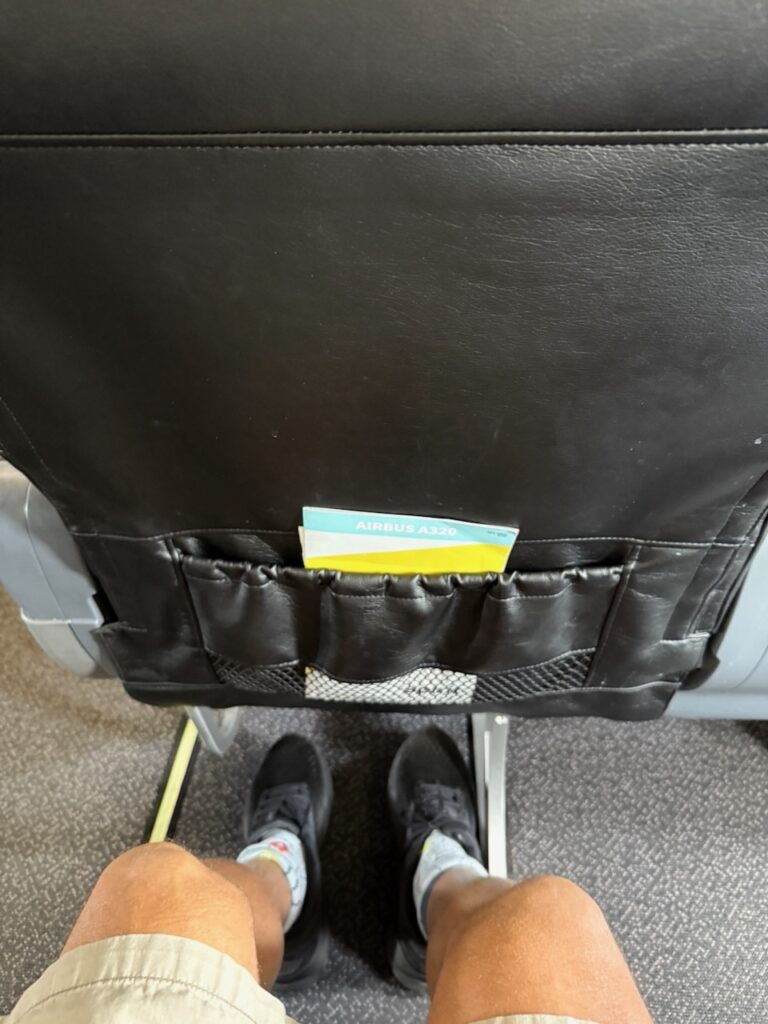 Yes, the Wi-Fi stumbled on this flight, there is no in-seat power, and catering is snack-bar level. Spirit’s limited frequencies, and issues in the event of IROPS recovery mean I won’t become a regular. But this flight — on an often-criticized airline (unfairly IMO) — was clean, on-time, and surprisingly pleasant.
Yes, the Wi-Fi stumbled on this flight, there is no in-seat power, and catering is snack-bar level. Spirit’s limited frequencies, and issues in the event of IROPS recovery mean I won’t become a regular. But this flight — on an often-criticized airline (unfairly IMO) — was clean, on-time, and surprisingly pleasant.
Compared to anything Southwest offers, Spirit’s First Class is a clear step up in both seat and catering. No one will confuse it with a global carrier’s front cabin, but that’s not the point.
And it’s still a unique animal. JetBlue and Frontier’s new first class products don’t begin installation until next year, and will take time while Spirit’s is already fleet-wide.
I’m still rooting for Spirit’s survival. Shrinking to profitability is rarely successful without huge labor concessions to match, so their survival is by no means assured even though they’ve received some breathing room.
If Spirit Airlines fails, we all lose. Everyone will likely face higher fares because there will be fewer low-cost flight options. Regardless of whether you fly with them or not, we’re all better off with the big yellow LCC, especially that Big Front Seat.
Related Articles:
- Spirit Airlines files for Chapter 11 for second time in under a year
- Spirit issues going-concern warning, capping painful period
- Spirit Wi-Fi impresses in nearly every way, except price
All images credited to the author, Chris Sloan




